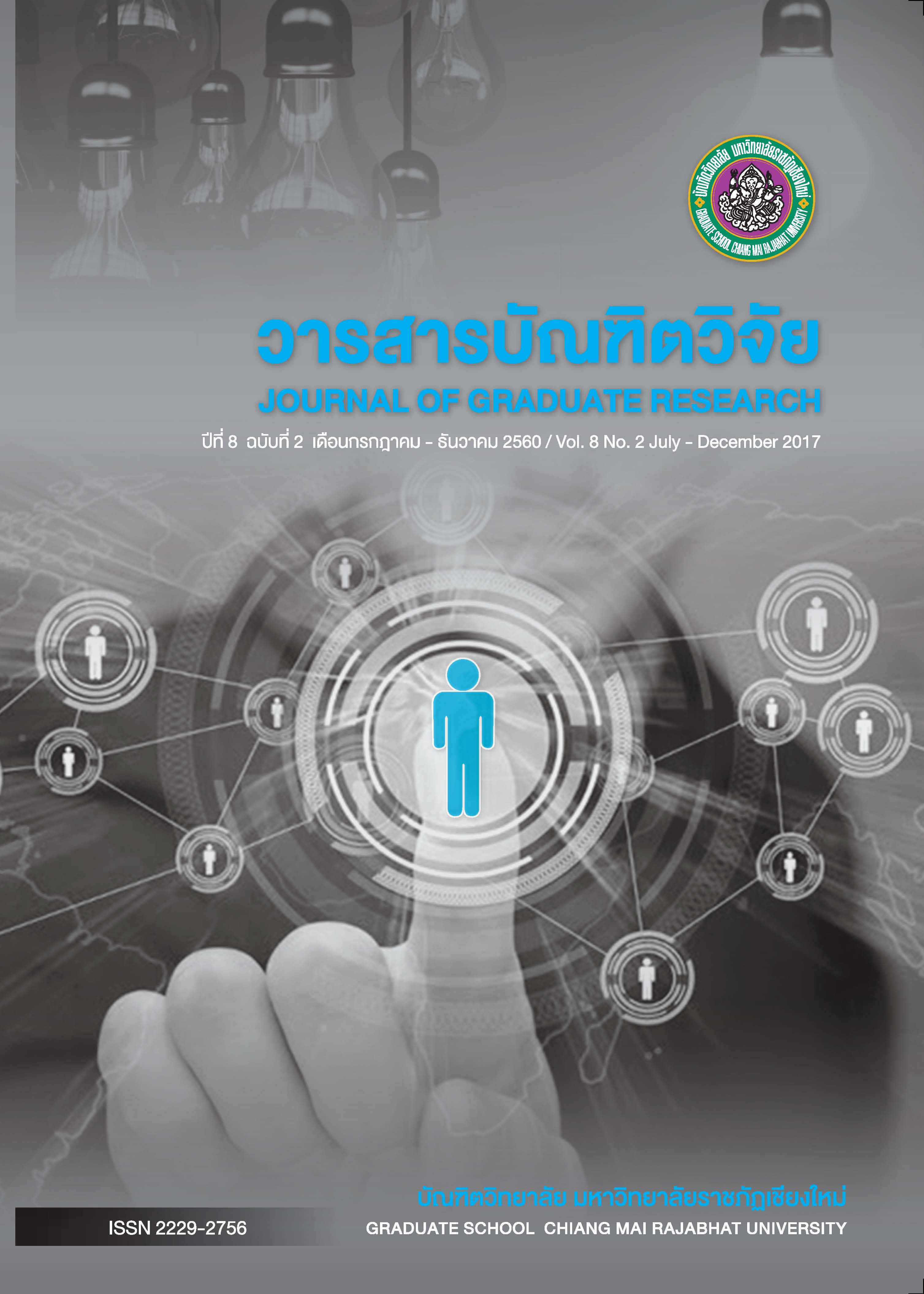The Literacy Written Construction by H.M. King Rama VI
Main Article Content
Abstract
The research has 3 objectives. It was to study the intention in writing the tales of H.M.King Rama VI, social functional from those tales and writing techniques used. Descriptive analysis was used in this study.
It was found that H.M.King Rama VI intended to sarcastically show how Thai people looked up to westerners and western culture as well as to show social problems in Thailand during his reign. He also intended to warn Thai people to use careful consideration and wanted his tales to help entertain the readers. Social functional from his writing were found to be to educate people, to be a guidance and to entertain the readers.
Techniques used in his writing were to start with describing the incidence or describing the characters. The body of his writing were reversed sequential, sequential or according to priority. He ended his writing in happy ending, questioning, unexpected or sad ending.
He presented the body of the story through the story itself, through the character’s action, through story teller’s perception or directly by the story teller. The scene in his writing were artificial, timeline or imaginary. There were 3 types of characters in his writing : human being, animals and imaginary characters. Conversation used in his writing were those that reflected each character’s personality, those reflected the writer’s idea and those showing characters’ disagreement.
Article Details
References
เกศรินทร์ คันธมาลา. (2552). การศึกษาวิเคราะห์ภาพสะท้อนสังคม วรรณคดีเรื่องพระสี่เสาร์กลอนสวด. (วิทยานิพนธ์ศิลปศาสตรมหาบัณฑิต, สาขาวิชาภาษาไทย, บัณฑิตวิทยาลัย มหาวิทยาลัยนเรศวร).
เกศินี จุฑาวิจิตร. (2552). การเขียนสร้างสรรค์ทางสื่อสิ่งพิมพ์. นครปฐม: มหาวิทยาลัยราชภัฏนครปฐม.
ไพพรรณ อินทนิล. (2534). เทคนิคการเล่านิทาน. กรุงเทพฯ: สุวีริยาสาส์น.
รสริน ดิษฐบรรจง. (2552). การเขียน. กรุงเทพฯ: มหาวิทยาลัยราชภัฏธนบุรี.
ลาวัลย์ สังขพันธานนท์. (2552). บทบาทหน้าที่ของนิทานพื้นเมืองลาว. (วิทยานิพนธ์ศิลปศาสตรดุษฎีบัณฑิต, สาขาวิชาภาษาไทย บัณฑิตวิทยาลัย มหาวิทยาลัยนเรศวร).
วรรธนะรัตน์ ไชยวงศ์. (2550). การวิเคราะห์กลวิธีการแต่งและคุณค่าของนวนิยายแปลเกาหลี. (วิทยานิพนธ์ศึกษาศาสตรมหาบัณฑิต, สาขาวิชาการสอนภาษาไทย บัณฑิตวิทยาลัย มหาวิทยาลัยเชียงใหม่).
วิรัลพัชร จรัสเพชร. (2555). กลวิธีการสร้างตัวละครในนวนิยายของ “กิ่งฉัตร”. (วิทยานิพนธ์อักษรศาสตรมหาบัณฑิต, สาขาวิชาภาษาไทย, บัณฑิตวิทยาลัย มหาวิทยาลัยศิลปากร).
ศิราพร ณ ถลาง. (2557). ทฤษฎีคติชนวิทยาวิธีวิทยาในการวิเคราะห์ตำนาน-นิทานพื้นบ้าน (พิมพ์ครั้งที่ 3). กรุงเทพฯ: สำนักพิมพ์แห่งจุฬาลงกรณ์มหาวิทยาลัย.
สุทัศน์ วงศ์กระบากถาวร. (2550). บันเทิงคดีประเภทเรื่องสั้น. กรุงเทพฯ: โอเดียนสโตร์.
สุนันท์ จันทร์วิเมลือง. (2551). การเขียนเชิงสร้างสรรค์. กรุงเทพฯ: วัฒนาพานิช.
อารี ถาวรเศรษฐ์. (2546). คติชนวิทยา. กรุงเทพฯ: ศูนย์หนังสือมหาวิทยาลัยราชภัฏสวนสุนันทา.
Jiang Nannan. (2555). กลวิธีการแต่งและแนวคิดในนวนิยายชุด ความสุขของกะทิ โดย งามพรรณ เวชชาชีวะ. (วิทยานิพนธ์ศิลปศาสตรมหาบัณฑิต, สาขาวิชาการสื่อสารภาษาไทยเป็นภาษาที่สอง บัณฑิตวิทยาลัย มหาวิทยาลัยหัวเฉียวเฉลิมพระเกียรติ).
Li Zijuan. (2558). กลวิธีการแต่งและแนวคิดในวรรณกรรมบันเทิงคดีสำหรับเด็ก ของ ชมัยภร แสงกระจ่าง. (วิทยานิพนธ์ศิลปศาสตรมหาบัณฑิต, สาขาวิชาการสื่อสารภาษาไทยเป็นภาษาที่สอง บัณฑิตวิทยาลัย มหาวิทยาลัยหัวเฉียวเฉลิมพระเกียรติ).
Yan Hanle. (2558). กลวิธีการแต่งและแนวคิดในเรื่องสั้นที่ได้รับรางวัลงานสัปดาห์หนังสือแห่งชาติ ประจำปี พ.ศ. 2556 – 2557. (วิทยานิพนธ์ศิลปศาสตรมหาบัณฑิต, สาขาวิชาการสื่อสารภาษาไทยเป็นภาษาที่สอง บัณฑิตวิทยาลัย มหาวิทยาลัยหัวเฉียวเฉลิมพระเกียรติ).

